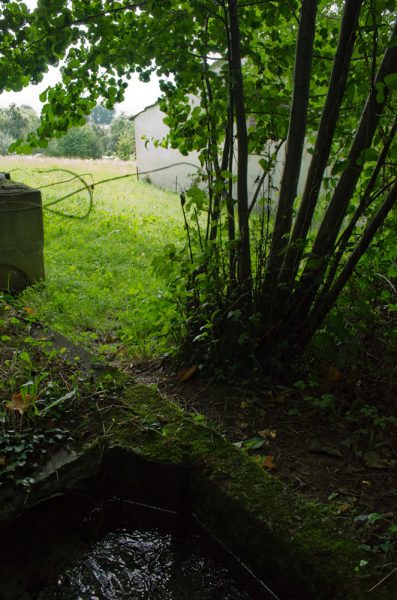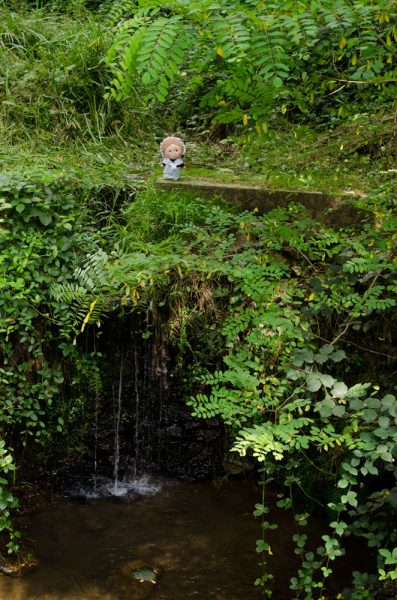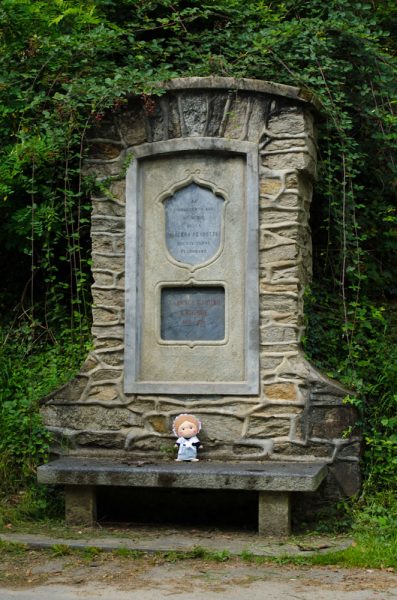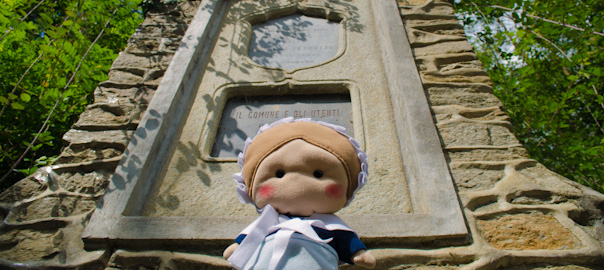Hi there!
After a while, I’d like to take you again on the banks of the Bealera Peyrota in order to go deep into its history and, of course, into history of people from Pellice Valley.

After flowing through the villages of Giovo and Chabas, the Bealera (which is – let me refresh your memory – an irrigation ditch dug by man) finally arrives in Peyrot town (from which it takes its name) in its first section within the boundaries of the hamlet of Luserna San Giovanni.
The Bealera Peyrota is one of the many artificial drains that once used to bring water in various parts of the valley. First information about this (and other) facility date back to 14th century: those were the sad years following the Black Plague, a terrible disease that devastated not only population in these valleys, but also people throughout the entire Italian peninsula.

At that time, population from Waldensian Valleys was decimated and people were forced to change their habits. While in 1300 these areas were in fact densely populated and people lived mainly by growing cereals, after the plague of 1348 mountaineers of Pellice Valley focused their attention mainly on sheep-farming, which was a more profitable activity than agriculture: breeding animals (and their feeding) was much more fruitful than working on wheat. Moreover, since many fields had been abandoned, there was a great availabilty of free grazing lands.

In order to produce hay enough to feed the cattle in winter time (when animals could not graze outdoors) it was necessary that the fields of the hill (also known as “coustera”) of San Giovanni would be properly irrigated… That’s the reason why Bealera Peyrota was built!
In 1425, some inhabitants of the hill asked permission to the Lords of Luserna to take water from the stream Angrogna to bring it up to the hamlet Peyrot, so the Bealera (which supply is located in Ghiounira, Angrogna) was extended up to here. The Bealera also supplied a mill for grain and nuts; unfortunately, nowadays there are no remains of that mill.

In 1503 other families asked permission to use water of Bealera: it was then entered into an agreement which established the rules for the water supply. That agreement (handwritten in Latin and called “Instrumentum”) still exists!
When – years later – Waldensians were forced to leave the Valleys, Bealera Peyrota was sold to some private citizens who did not care about it and, as a consequence, they caused the failure of the mill and the end of the water flowing along the abandoned strain.
However, after the Glorious Return, exiled populations regained possession of their ancient lands, and both the Bealera and the mill were reactivated.

In the following years, the municipal authorities lost interest in the Bealera Peyrota, until when users gathered in a new consortium in 1874 and wrote a regulation still effective today. In this regulation users even succeeded in solving some quarrels between inhabitants of Luserna S.G. and of Angrogna (where the drain runs for most of its course) about the use of that water.
Do you remember my back adventures at Bealera Peyrota?
Go back and take a look at Rocha Pisoira and at the splitter…
How to get here:
reach the center of Luserna San Giovanni and, from the main roundabout, turn right into Gianavello st., then go along this road for its entire length (about 1 km).
Take Fuhrmann st. on the left and go straight for 350m, then turn right into Peyrot street; go along this road until you reach a crossroad with a beautiful mansion in front of you (Villa Sorriso): turn right and after a few meters you will find the first panel of Bealera Peyrota.
Continuing you will find the monument on your left and, crossed the small bridge, there you’ll find the second panel.
Do you want to read the tale in Italian ?
